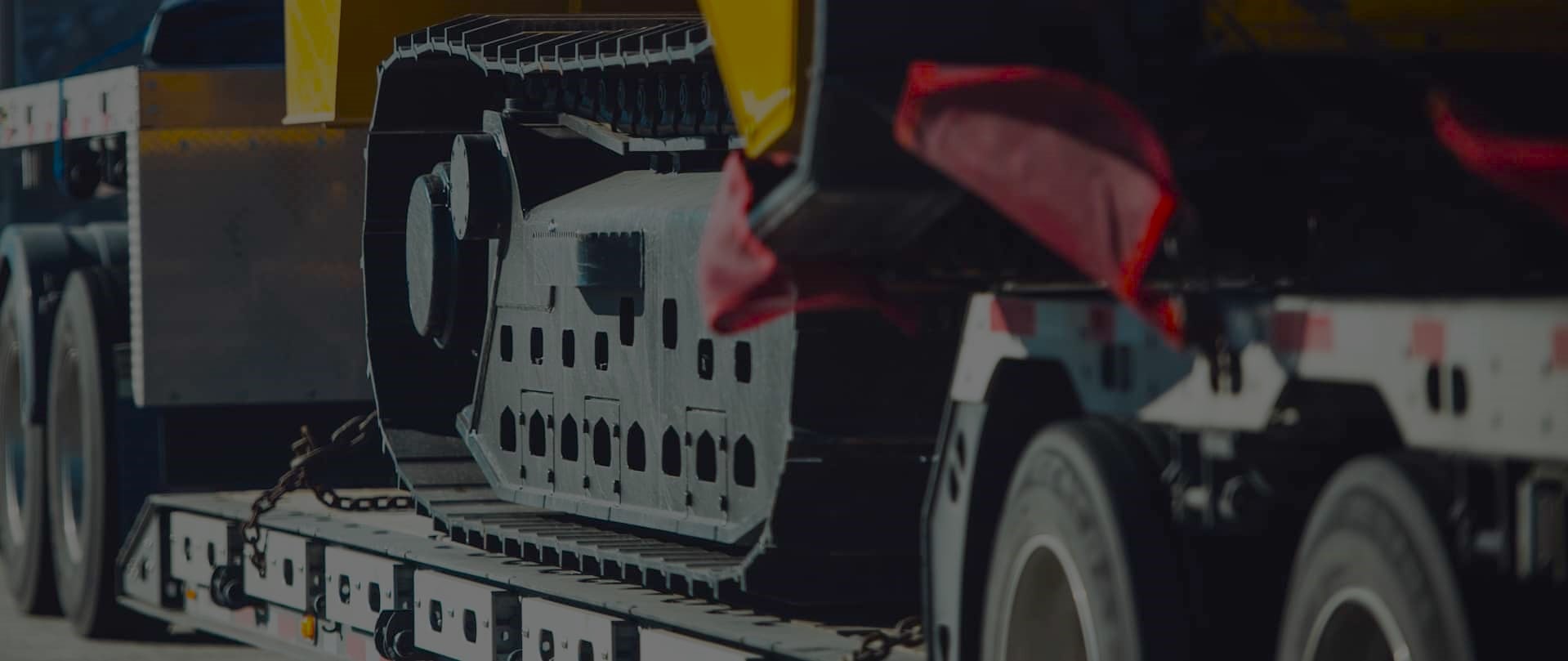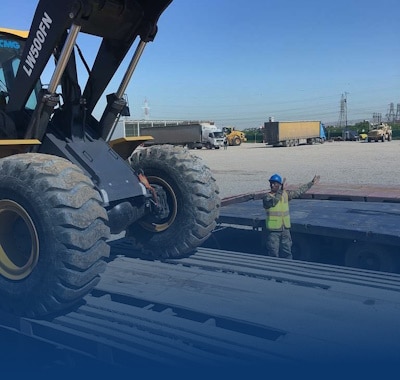Strategies to Minimize Financial Surprises During Equipment Moves
Freedom Heavy Haul can offer expedited Pickup and Delivery for any size shipment anywhere in the USA. Contact us today for No Hassle, No Pressure Pricing.
Relocating heavy equipment can significantly impact your business operations and budget. Without a clear plan, unexpected costs and operational challenges can arise, affecting your bottom line. We understand the importance of aligning these moves with your company’s broader goals to ensure efficiency and savings.
From acquisition to relocation, every decision plays a role in managing risk and maximizing return on investment. Hidden expenses, such as breakdowns or delays, can disrupt your project timeline and increase spending. That’s why preventive measures and advanced resource management are critical.
Drawing insights from industry leaders like Healthcare Financial Management and RedBeam, we emphasize the value of technology and planning. By integrating these practices, you can reduce risk and enhance operational efficiency. Let’s explore how to navigate these challenges effectively.
Understanding Financial Surprises in Equipment Moves
Hidden costs often catch businesses off guard during critical transitions. These unexpected expenses can stem from overlooked risk factors, such as hidden repair needs or delays. Without proper planning, they can disrupt operations and strain budgets.
Identifying Hidden Costs and Risk Factors
One major risk is the need for unexpected repairs. For example, moving heavy equipment can reveal underlying issues that weren’t apparent before. Downtime costs are another concern. When equipment is unavailable, it can delay projects and increase spending.
“In one case, a hospital faced significant budget overruns due to unplanned maintenance during a medical equipment relocation.”
Evaluating Operational and Budgetary Impact
These financial surprises can have a ripple effect. Operational efficiency suffers, and budgets are stretched thin. For instance, a manufacturing company might face production halts if equipment isn’t ready on time. This can lead to missed deadlines and lost revenue.
Proactive planning and thorough budget reviews are essential. By identifying potential risks early, businesses can minimize disruptions and protect their bottom line. This approach ensures smoother transitions and better resource management.
Strategies to Minimize Financial Surprises During Equipment Moves
Establishing a solid financial framework is crucial for smooth transitions. Without clear guidelines, unexpected costs can derail your business operations. We recommend setting tight budget parameters to prevent overspending and ensure financial stability.
Separating Negotiations for Better Control
One effective approach is to separate equipment pricing from financing terms. This strategy, endorsed by Healthcare Financial Management, provides greater control over spending. By keeping these negotiations distinct, you can avoid hidden fees and make informed decisions.
Forecasting future needs is another critical step. Anticipating upgrades or replacements helps you allocate resources efficiently. For example, healthcare organizations often use historical data to predict equipment needs, ensuring they stay within budget.
Using Data to Guide Decisions
Historical data and industry benchmarks are invaluable tools. They provide insights into typical costs and potential risks. By analyzing this information, you can set realistic budget parameters and reduce financial uncertainty.
Here’s a breakdown of key factors to consider when setting your budget:
| Factor | Description |
|---|---|
| Historical Data | Use past equipment costs to predict future spending. |
| Industry Benchmarks | Compare your budget to industry standards for accuracy. |
| Future Needs | Plan for upgrades or replacements to avoid sudden expenses. |
| Separate Negotiations | Keep equipment pricing and financing discussions distinct. |
Transparent budget setting influences your overall equipment management strategy. It ensures smoother transitions and better alignment with operational goals. For more insights, explore our cross-country equipment relocation guide.
Aligning Equipment Decisions with Business Strategy
Making smart choices about equipment can drive long-term success for your business. When these decisions align with your company’s broader goals, they create a foundation for sustainable growth and operational efficiency. We believe that integrating equipment planning with your strategy is key to minimizing risks and maximizing returns.
Integrating Operational Needs with Financial Goals
Balancing operational requirements with financial objectives ensures a holistic approach. For instance, healthcare organizations often use historical data to predict equipment needs, ensuring they stay within budget. This integration helps avoid overspending while meeting operational demands.
Case studies from manufacturing and healthcare sectors highlight the importance of this balance. One hospital reduced costs by 15% by aligning its equipment purchases with its long-term financial goals. This approach not only saved money but also improved patient care.
Developing a Comprehensive Equipment Roadmap
A well-defined roadmap outlines long-term goals and replacement cycles. It provides clarity on when to upgrade or replace equipment, reducing unexpected costs. Tools like RedBeam’s asset management software can help create these roadmaps, ensuring they are data-driven and actionable.
Here’s a breakdown of key elements to include in your equipment roadmap:
| Element | Description |
|---|---|
| Long-Term Goals | Define how equipment supports your business objectives. |
| Replacement Cycles | Plan for upgrades to avoid sudden expenses. |
| Budget Allocation | Ensure funds are available for future needs. |
| Risk Assessment | Identify potential challenges and plan solutions. |
Proactive planning and clear metrics guide financial decisions, ensuring your equipment strategy aligns with your business goals. For more insights on safe and efficient equipment management, explore our best practices guide.
Leveraging Technology and Data for Cost Efficiency
Modern technology is reshaping how businesses manage their assets. By integrating advanced tools, companies can optimize cost efficiency and enhance visibility across their operations. This approach not only reduces unexpected expenses but also ensures smoother workflows and better resource allocation.
Implementing Asset-Tracking and Management Software
Asset-tracking solutions like RFID and barcode scanning provide real-time visibility into equipment locations and conditions. These tools help businesses monitor usage, schedule maintenance, and prevent downtime. For example, a manufacturing company reduced its maintenance costs by 20% after adopting RFID-based tracking.
Cloud-based systems further enhance this process by centralizing data and enabling remote access. This ensures that all stakeholders have up-to-date information, improving decision-making and operational efficiency. Predictive maintenance, powered by data analytics, allows organizations to address potential issues before they escalate, extending equipment lifespan and reducing repair costs.
Here’s a breakdown of key benefits offered by asset-tracking technologies:
| Technology | Benefit |
|---|---|
| RFID | Real-time location tracking and usage monitoring. |
| Barcode Scanning | Accurate inventory management and maintenance scheduling. |
| Cloud-Based Systems | Centralized data access and remote monitoring. |
| Predictive Maintenance | Early issue detection and reduced downtime. |
By leveraging these tools, businesses can minimize risks and maximize returns on their investments. For more insights on efficient equipment management, explore our affordable machinery relocation services.
Practical Tips for Effective Equipment Management
Proactive maintenance and strategic procurement are key to managing equipment efficiently. By focusing on these areas, businesses can reduce costs, minimize risk, and enhance operational stability. Let’s explore actionable steps to optimize your equipment management processes.
Optimizing Maintenance and Lifecycle Planning
Scheduled maintenance is essential for keeping equipment at peak performance. Regular inspections and timely repairs prevent unexpected breakdowns, saving both time and money. For example, a manufacturing company reduced downtime by 30% after implementing a proactive maintenance plan.
Lifecycle planning extends the longevity of your assets. By anticipating replacement needs, you can avoid sudden expenses and maintain smooth operations. Healthcare organizations often use historical data to predict equipment lifespans, ensuring they stay within budget.
Here are some practical steps to optimize maintenance and lifecycle planning:
- Conduct regular maintenance reviews to identify potential issues early.
- Use predictive maintenance tools to address problems before they escalate.
- Plan for upgrades or replacements based on usage and wear patterns.
Streamlining Procurement and Negotiation Processes
Refining procurement strategies can lead to significant cost savings. Separating purchase price discussions from financing terms provides greater control over spending. This approach, endorsed by Healthcare Financial Management, helps avoid hidden fees and ensures transparency.
Effective negotiation is another critical factor. By leveraging market data and industry benchmarks, businesses can secure better deals. For instance, a hospital saved 15% on equipment purchases by adopting a data-driven negotiation strategy.
Here’s how to streamline procurement and negotiation:
- Use historical data to set realistic budget parameters.
- Separate pricing and financing discussions for better clarity.
- Collaborate with suppliers to identify cost-effective solutions.
Integrating these practices into your equipment management strategy ensures smoother operations and enhanced profitability. By focusing on maintenance, lifecycle planning, and procurement, businesses can achieve long-term success.
Maximizing ROI Through Preventive Maintenance and Automation
Preventive maintenance is a game-changer for businesses aiming to maximize ROI. By addressing potential issues before they escalate, companies can reduce unexpected costs and extend the lifespan of their equipment. This proactive approach not only saves time but also enhances operational efficiency.
Automation plays a critical role in this process. By streamlining repetitive tasks, businesses can minimize manual errors and allocate resources more effectively. For example, automated systems in accounts payable and payroll reduce processing time and improve data accuracy.
Automating Repetitive Processes for Cost Savings
Automation transforms how businesses handle maintenance workflows. Tools like predictive maintenance software analyze datum to identify potential failures before they occur. This reduces downtime and prevents costly emergency repairs.
Case studies from industries like healthcare and manufacturing highlight the benefits. One hospital reduced maintenance costs by 25% after implementing automated tracking systems. Similarly, a manufacturing company saw a 30% decrease in downtime by using predictive analytics.
Here’s a breakdown of key benefits of automation:
| Benefit | Description |
|---|---|
| Error Reduction | Automated systems minimize manual mistakes in data entry and processing. |
| Cost Savings | Reduced downtime and fewer emergency repairs lower overall expenses. |
| Data Accuracy | Real-time data collection ensures precise decision-making. |
| Workflow Efficiency | Streamlined processes save time and improve productivity. |
Integrating automation with existing asset management systems enhances decision-making. For instance, cloud-based platforms provide centralized access to equipment data, enabling better planning and strategy alignment.
Businesses that adopt these practices see measurable ROI improvements. By reducing risk and optimizing resource allocation, they ensure smoother operations and long-term savings. For more insights on efficient equipment management, explore our reliable heavy equipment relocation services.
Final Take: Empowering Smarter Equipment Moves
Effective management of heavy assets ensures smoother transitions and better financial outcomes. By aligning equipment decisions with your business goals, you can reduce risk and maximize returns. Planning and budgeting are essential to avoid unexpected costs and operational disruptions.
Leveraging technology and automation drives efficiency and enhances visibility. Tools like predictive maintenance software help identify potential issues early, saving time and resources. Preventive maintenance extends the lifespan of your assets, ensuring long-term savings.
Adopting data-driven practices safeguards your investments. Proven benefits in healthcare and industrial sectors highlight the value of these strategies. By following expert insights, smarter equipment moves are within reach.
Take action today to optimize your processes and protect your bottom line. Your success starts with the right approach.







